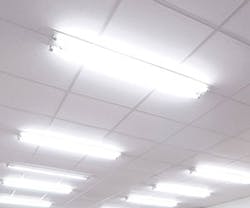Schools Face a Potential PCBs Threat From Dated Lighting Fixtures
School administrators and maintenance personnel should take time to inspect fluorescent lighting fixtures as some may have ballasts that contain polychlorinated biphenyls (PCBs). The EPA has released information that provides guidance on what to do if this is the case.
Many older ballasts contain PCBs that can leak when the ballasts fail, leading to elevated levels of PCBs in the air of schools. While the elevated PCB levels should not represent an immediate threat, they could pose health concerns if they persist over time. Leaking ballasts must be removed and properly disposed of along with any part of the fixture that has been contaminated with PCBs. In schools across the country, most PCB-containing fluorescent light ballasts have exceeded their life span and are beginning to leak and smoke.
More than 150 incidents of leaking or smoking ballasts have been reported to the EPA from New York and New Jersey schools over the past 15 months. PCBs may cause cancer and have been shown to cause a number of serious non-cancer health effects in animals, including effects on the immune system, reproductive system, nervous system, and endocrine system.
Prior to 1979, PCBs were commonly used as an insulator in ballasts. In 1979, the EPA banned the processing or use of PCBs, except in totally enclosed equipment. However, a large number of fluorescent light ballasts that were installed prior to the ban or that were stored and used after the 1979 phase-out, may contain PCBs and may still be in use in the U.S.
The most likely way that people are exposed to PCBs from the ballasts is through breathing PCB-contaminated air or by touching PCB-contaminated materials. When they remain in place, leaking ballasts can continue to release PCBs over several years and create elevated levels of PCBs in the air that students, teachers, and other school workers breathe. The EPA recommends removing PCB-containing ballasts from buildings as soon as possible to prevent exposure.
Removal of PCB-containing fluorescent light ballasts, as part of lighting upgrades or a stand-alone project, is an investment that may pay off with long-term benefits to students, school staff, the community, and the environment. According to the EPA, a complete lighting retrofit eliminates the PCB hazards and increases energy efficiency by 30-50%.
Detailed information on the savings that may be achieved and potential funding that may be acquired through an investment in new lighting is available at the Energy Star website, which also provides information about funding that may be available for the replacement of old fixtures. For more information on PCBs in schools, see the EPA's guide.
